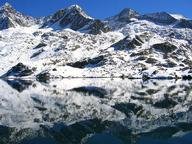
Glaciers of the World Trivia Quiz
As the Funtrivia Globetrotters made a visit to Banff National Park in Canada, it seemed like a good time to check in on glaciers around the world to see how they are faring in the 21st century. Match each glacier to the country where it is located.
A matching quiz
by looney_tunes.
Estimated time: 3 mins.